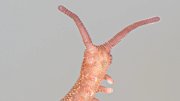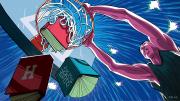Bill Jaeger never meant to become a union organizer: when he arrived at Harvard in 1984, shortly after graduating from Yale with a degree in Russian studies, he planned to work at the Russian Research Center and then go to graduate school. But with workers in his office and across Harvard unionizing,he was drawn in.“I saw some really thoughtful, really impressive people throwing themselves into that,” he says. Jaeger grew up outside St. Louis, where his father was an accountant for McDonnell Douglas. After high school, looking for more diverse geography, he headed to Yale, where he met his wife, Susan Mintz, while singing in the glee club.They now live in Arlington, where he enjoys watching European professional soccer with their two sons and plays recreationally with an over-50 club called the Arlington Pond Dawgz. At Harvard, he gave up on a master’s degree after a semester and joined the unionizing effort full time in 1986. As director, he now represents the Harvard Union of Clerical and Technical Workers’ 4,600 members in negotiations with the University—which can involve as many as 60 to 70 formal meetings a year. This past March, nine months after their con- tract expired, HUCTW and Harvard settled on a new three-year agreement. Jaeger, a careful, measured speaker, says HUCTW makes use of what is known formally as an “interest-based approach,” and the union has never gone on strike. Even so, settling the contract, and pushing forward on talks about health insurance, have made for a “really tough year.” But it was because the agreement was slow to arrive that more of the Harvard community was able to join in a discussion about labor.“That wouldn’t have happened,” he says,“if this had been a quiet, quick, smooth negotiation.”
Bill Jaeger has led unionizing efforts full time since 1986
Bill Jaeger has led unionizing efforts full time since 1986
He has led unionizing efforts full time since 1986.

You might also like
Harvard Announces Four University Professors
Catherine Dulac, Noah Feldman, Claudia Goldin, and Cumrun Vafa receive the University’s highest faculty distinction.
Creepy Crawlies and Sticky Murder Weapons at Harvard
In the shadows of Singapore’s forests, an ancient predator lies in wait—the velvet worm.
Harvard’s Endowment, Donations Rise—but the University Runs a Deficit
The annual financial report signals severe challenges to come.
Most popular
Explore More From Current Issue

Rachel Ruysch’s Lush (Still) Life
Now on display at the Museum of Fine Arts, a Dutch painter’s art proved a treasure trove for scientists.







